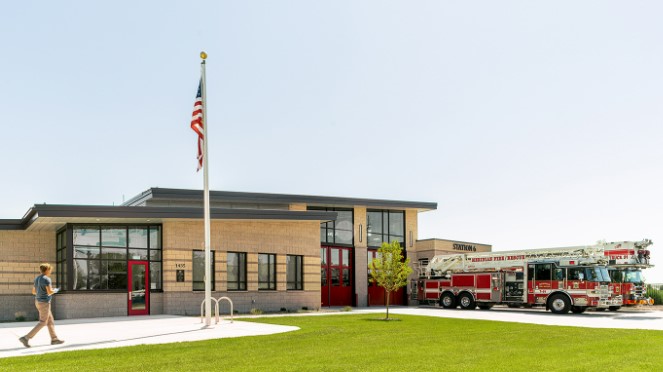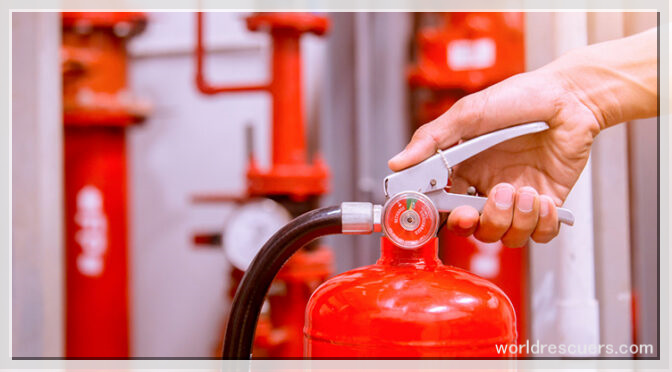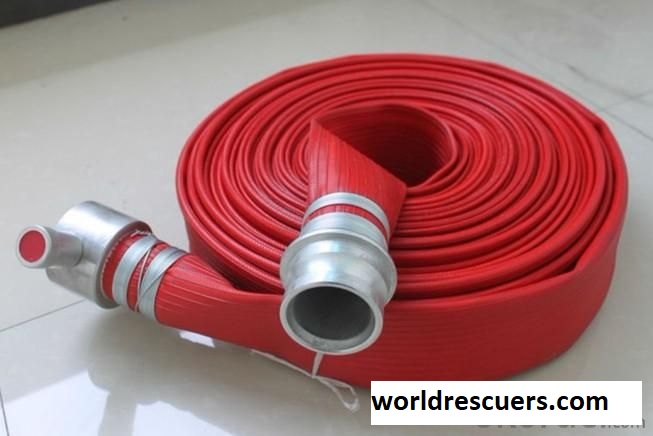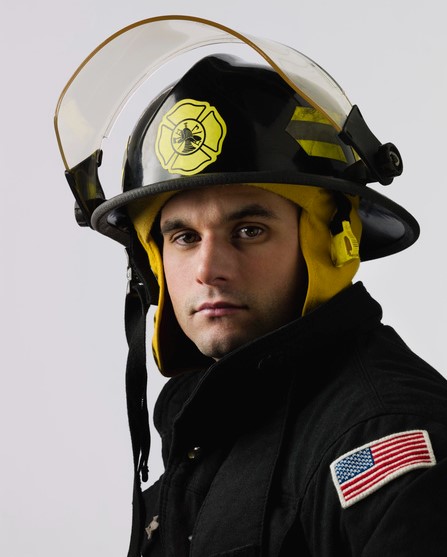
Fire stations
Fire stations, also known as a firehouse or fire services/departments, are used as a base of operations for firefighters. Some fire stations also offer other medical and rescue services along with fire services. These emergency related facilities are typically located in urban and sub-urban areas. They are supposed to respond to fires, natural disasters, and medical emergencies.
In this précised article, we will learn about fire stations in detail, list of equipment along with their attached facilities.
Employees- Firefighters and Rescuers
Fire stations have firefighters as employees and volunteers on duty 24/7, ready to respond to any emergency call. Generally, these firefighters work in three shifts to ensure the operational readiness of the responders. The emergency paramedics, rescuers, and support staff are also part of the fire stations.
Equipment and machinery
Firefighting Equipment list
Fire Extinguishers
These are the most basic firefighting equipment. We can see this equipment installed in every kind of building. Fire extinguishers include CO2, Foam type, Halotron, DPC, and Water-type fire extinguishers.
Fire First Aid Kits
This sort of first aid kit has all the necessary things that may be required to apply to the burn area of a person. It contains antibiotic ointment, non-adhesive gauze bandages, scissors, and pain relievers.
Fire Hoses
These hoses (long pipes) are used to transport pressurized water from the water pump to the seat of the fire. These are further classified according to their function, delivery, and suction hoses.

Fire Suit
It is one of the most important of equipment for firefighters. It is a kit with safety boots, jackets, trousers, and a face mask made of fire-retardant materials. In any fire incident, the safety of firefighters is always the top priority. Fire Helmet is again a vital part of this safety gear. Euro fire helmet or US fire helmet are most common in use among the firefighters. American vs European Fire helmets is the hot topic among professional fire fighters while making their choice.
Fire Fighting Vehicle
The vehicles specially designed for firefighting purposes are called fire vehicles. Different capacities of vehicles are available in the market according to their requirements for operational purposes. Almost all vehicles have water pumps installed to pump the water at an emergency scene.
Foam Monitors
The foam monitors are the permanently installed equipment on fire Truck. This is for the flammable liquid class of fires like petrol, diesel, etc. Firefighters used this on the fire that erupted in vehicles- oil tankers etc. but except electric vehicles. The fire truck price may varies from place to place and in accordance with the specifications.
Fire Balls for firefighting
These are fire fighting equipment that operates automatically. The firefighters throw these balls on the seat of fire upon responding to the incident. These balls are of mainly two types- DCP type and CO2 type.
Fixed Fire Pumps used for pumping water
These pumps push water from the tank/hydrant to the pipes or hoses. Centrifugal-type pumps are commonly in use for this purpose. Various types of pumps are available in the market, having different capacities. These may include the main, diesel, jockey, sprinkler, and backup pumps.
Portable fire pumps:
As the name reflects, these pumps are portable- not fixed. These are transportable to any place as per the requirement. These are used when water is available in hydrants or reservoirs other than fire vehicles’ water tanks.
Rescue Equipment
- Ladders
- Ladder stability Controller
- Floodlights
- Jaws of Life Tool
- Pneumatic tools and Bags
- Leader Scan life Equipment
- High-pressure lifting Bags
- Portable Generators
- DELSAR Life detectors used in building collapse
- Search Cams
- Disasters deployment kits
- And many More
Medical equipment on fire stations
- ECG monitor and a Defibrillator
- Spinal board
- Transport Ventilators
- Suction Unit
- Infusion Syringe Pumps
- Ambulance Equipment: Cot, Patient Shifting Rolls, and Ambulance Chair
- A Nebulizer
- Oxygen Supply Units
- A Sphygmomanometer
- Ambulance Equipment: rescue splints and bandages
These stations are typically equipped with various tools and equipment designed to help the responding firefighters. The equipment may include firefighting gear, Fire hoses, water pumps, ladders, and medical equipment, such as defibrillators and oxygen cylinders. Furthermore, these may include Jaws of Life tools for rescue operations.
Communication system on a Fire station
Another critical component of a fire station is its communication system. While responding to an emergency call and dealing with the emergency, emergency professionals need to communicate with the fire station. The efficient communication system enables responding Firefighters to communicate with one another quickly and efficiently. This happens both within the station and while responding to emergencies. Fire station typically has a sophisticated communication system in place. This includes radios, telephones, and computer systems.
Functions of the Fire station
Firefighting and Rescue Operations
This is the main function of employees and volunteers of the fire department or service. The round-the-clock availability of all firefighters and related officials’ cadres makes these emergency departments worthwhile. Dealing with all emergencies by swiftly responding to the incidents is their prime duty.
Community Safety
In addition to their prime duties, the responsibility to educate the community on safety topics also goes to these heroes. All over the world, Rescuers and firefighters also work to build safe and resilient communities. This ensures that a day should come when there is no emergency call. Fire stations also play an important role in educating the community about fire safety. Many fire stations offer educational programs for schools and community organizations to teach people about fire safety, how to prevent fires, and what to do in case of a fire.
Building Safety
The accurate implementation of all safety laws is also the responsibility of fire departments. The owner of any facility has to get the fitness or safety certificates from these fire departments. This is intended to ensure safety measures in the facility.
Conclusion
In conclusion, fire stations are an essential part of any community. They provide critical emergency services, help educate people about fire safety, and play an important role in supporting the community during times of crisis. As such, fire stations must be well-funded, staffed with highly trained professionals, and equipped with the tools and resources necessary to respond to emergencies effectively.

Hi, I am John Smit a Captain in Fire Department City of Newyork with over years of experience in the field of Firefighting and HSE. My passion for fire safety started when I was a young boy and witnessed a neighbor’s house go up in flames along with precious lives. Since then, I had dedicated my life to ensuring the safety of buildings, properties, and individuals in case of a fire and medical emergencies.


